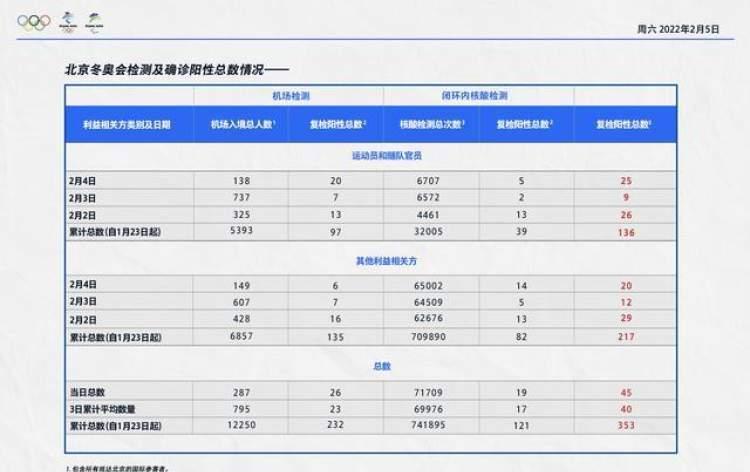According to the Beijing Winter Olympics Organizing Committee, from 0:00 to 23:59 on February 4, the total number of olympic-related personnel entering the airport totaled 287, including 138 athletes and team officials, and 149 other stakeholders. After the customs test, 26 people re-tested positive, including 20 athletes and team officials, and 6 other stakeholders.
From 0:00 to 23:59 on February 4, the total number of closed-loop internal nucleic acid tests was 71709, including 6707 athletes and team officials, and 65002 other stakeholders. There were 19 people who re-examined positive, including 5 athletes and team officials, and 14 other stakeholders. The inbound personnel and related staff of the Beijing Winter Olympic Games are closed-loop management and completely isolated from the social aspect.

At the special press conference on "Urban Service Guarantee" held by the Beijing News Center in 2022 this morning, Wang Jianhui, deputy director of the Beijing Municipal Health Commission and spokesman of the Beijing Municipal Health Commission, introduced, "In accordance with the requirements of the Winter Olympics epidemic prevention and control policy, in coordination with the Beijing Municipal Winter Olympic Organizing Committee, the injured and sick people involved in the Winter Olympics will be divided into five categories: confirmed and suspected patients with new coronary pneumonia, patients with fever symptoms in the closed loop, other injured and sick people in the closed loop, patients with fever symptoms outside the closed loop, and other injured and sick people outside the closed loop." ”
The above five categories of winter Olympic injuries and sick will be accurately classified and treated in 18 designated hospitals to avoid the crossover of the flow of wounded and sick people with different risks. There will be more than 2,100 medical backbones in the designated hospitals to provide timely and efficient medical services.